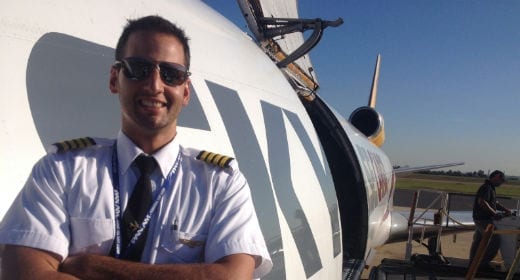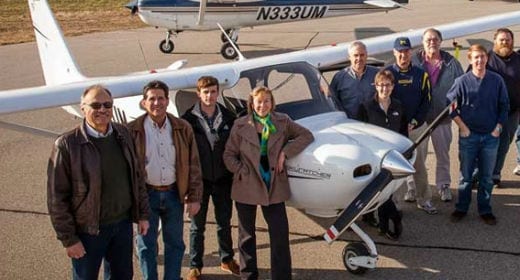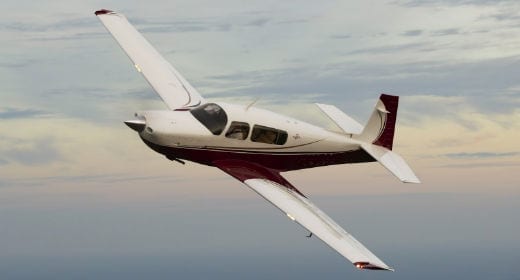
We did something to the altitude
I Can't Believe I Did ThatWhen my friend Paul had mentioned a club at Republic Airport where I fly that was renting 2007 C172s with the G1000 panel, I jumped at the idea. I was previously flying a 2003 Piper Archer with 2 Garmin 430s and while I love the Archer, the club where I rented was very expensive, and I was excited to “step up” to the newer system.

The error chain in action: Pilatus crash at Butte
Accident ReportAccording to Hemingway, a man goes bankrupt gradually, then suddenly. The same could be said of the way pilots crash airplanes: a series of small mistakes slowly build up until a final mistake suddenly ends the flight. A 2009 Pilatus PC-12 accident in Montana is a tragic example.

Recollections of EAA Founder Paul Poberezny
I was thereI knew Paul Poberezny well from the early 1980s, having been introduced to him by a non-pilot colleague at Mayo Clinic, where I was on the medical staff. Paul became a friend whom I could call at any time, including nights and weekends, and expect a warm response. I think he had similar relationships with countless others.

A double tragedy: Colgan Air Flight 3407
Dick's blogThe crash of a DHC-8-400 (Q400) on approach to Buffalo, N. Y. brought on the all-time most egregious case of smoke and flames rulemaking by the FAA. It was dictated by Congress, it makes no sense, and it will have a lasting deleterious effect on air service to smaller cities and on airline flying as a profession.

Flaps anyone? Strange things can happen
I Can't Believe I Did ThatI am a student pilot with 42 hours of flying time and am just getting ready for my flight exam. On Sunday I was practicing touch-and-goes and after my first landing, I retracted the flaps, added power and started to climb out. I immediately noticed that my climb rate was lower than normal.

From the archives: Journey to Wichita
Air Facts ArchivesOne of the first articles published on Air Facts when we relaunched in 2011 was Rob Buck's delightful trip down memory lane, telling the story of a boyhood flight to Wichita with his father (legendary pilot Bob Buck). Here, we share the other side of the story: Bob Buck's account of this same flight, as told in the April 1958 edition of Air Facts.

Malaysia 370 is not the first: Flying Tigers 739 was
Dick's blogWe have been inundated by speculation on the missing Malaysian 777 but nowhere have I seen the event connected to another eerily similar event from over 50 years ago, on March 14, 1962 to be precise.

Building a career by believing in your dream
Young PilotsIn the first article from our "Young Guns" series, meet Andrea Tomaselli, a young pilot from Venezuela who followed his dreams and made captain on the MD-11 at just 27. He shares his story and what he learned about succeeding in a turbulent aviation industry.

Practice makes perfect–sometimes
John's blogEveryone wants to be a better pilot. The real question is: how do we become better pilots in the most efficient way? Fortunately, the past decade has seen a boom in the science of how people learn and improve their skills. This research has much to offer pilots.

Debate: is there a pilot brotherhood?
DebateMany pilots value their license not just for the privileges it unlocks, but also for the membership it represents. That membership is in the unofficial "pilot brotherhood," which bonds together aviators from around the world--regardless of race, class or location.

The hungry pilot: flying with Subway
The Hungry PilotWhy was I happy to see a report that the longtime Wichita, Kansas, FBO, Yingling, would soon have a Subway at its facility?

60 seconds airborne: the end of Sabre 26710
I was thereAs we passed over the end of the runway at about two hundred feet above ground level, a massive explosion (accompanied by a transitory smell of smoke) was heard and felt aft of the cockpit coupled with a complete loss of acceleration. The sudden cessation of over seven thousand pounds of thrust was noticeable.

Competition in a man’s sport: top six women in early US flight
HistoryThe challenge of this article is to identify the six most significant women and their contributions to the art of flying as a sport and as a science in the early years. These women pilots were built of courage, conviction, passion and vision.

What’s wrong with Mooney pilots?
Dick's blogI have found that the safety record of an airplane relates more to who flies it and what they try to do with it than anything else. Maybe the pilot is 90 percent of the equation and the airplane ten. When thinking of it in this way, the Mooney 20 series is by far the most diverse airplane in the fleet.

Thrills awaiting a flight instructor
I was thereBy now we had lost several thousands of feet as expected, after starting off at 8000 feet. There was no answer from the front seat so I attempted to take control, only to find the controls jammed in the pro-spin positions.

Some thoughts on landings
TechniqueI was TERRIBLE at landings. Not just bad--TERRIBLE. I either stalled the plane at three to five feet (or more) above the runway or drove right into it. My airspeed control was marginal. My sight picture was non-existent. Here's how I got better.

The approach plate olympics – more crazy charts
John's blogEverybody loves a good approach plate. At least Air Facts readers do. After we shared seven bizarre instrument approach charts last year, we had hundreds of positive comments and numerous requests for more. As we like to say here, the readers are PIC, so here we will indulge your desire for more torturous procedures.

The flight of a lifetime
I was thereFlying in a light aircraft has its risks and rewards just like any other endeavor. We all know that the risks can be considerable, but what about the rewards? Are they worth the risks? This flight, complete with pictures and video suggests they are.

Richard Bach and Air Facts: long time ago…
HistoryIn the summer of 1960 a 24-year old Air Force jet fighter pilot, Richard Bach, submitted an unsolicited article to Air Facts. It was the beginning of an incredible writing career. Here, Dick Collins tells Bach's story and we republish his very first Air Facts article.

Night flying: out of our element
TechniqueAs much as we romanticize night flight, it's not something most pilots do very often. It's foreign territory, and the poor accident records backs this up. So what can we do to fly safer at night? Let's consider terrain, spatial disorientation, weather, fuel and fatigue.
